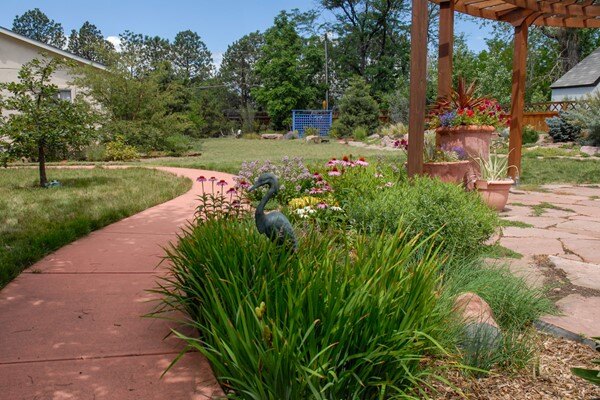Hopflower Oregano
Hopflower oregano is a perennial flower with trailing stems. The dangling chartreuse, hop-like bracts enclose tiny lavender flowers in the summer. Later the bracts dry to a soft brown color and rustle in the wind.
It is very attractive when planted in a spot where it can drape over a wall or boulder.
.jpg)
.jpg)
.jpg)
.jpg)
.jpg)
.jpg)
Hopflower Oregano
Hopflower oregano is a perennial flower with trailing stems. The dangling chartreuse, hop-like bracts enclose tiny lavender flowers in the summer. Later the bracts dry to a soft brown color and rustle in the wind.
It is very attractive when planted in a spot where it can drape over a wall or boulder.
Plant details
Botanic Name
Origanum libanoticum
Pronunciation
or-RI-ga-num lib-an-OT-ih-kum
Mature Height
12 to 18 in.
Mature Spread
18 to 24 in.
Water usage
One Droplet: Water twice per month or less, once established.
Two Droplets: Water about once per week, once established.
Three Droplets: Water about twice per week, once established.
Flower Color
lavender flowers enclosed in chartreuse-colored bracts
Bloom time
summer to fall
Colorado Native
No
Natural Habitat
Mediterranean
Light Requirements
sun, part shade
Cold Hardiness
USDA zones 4-8
Elevation Limit
hardy to 7,000 ft.
Performance
Hopflower oregano has been used in several different areas at the Water Wise Demonstration Garden. It is a beautiful plant when placed at the edge of a retaining wall or boulder where it can cascade downward. When grown in a flat area, it sometimes looks floppy.
Maintenance
Cut the old plant material to ground level in the spring before new growth starts.
See in a landscape
With a yard this big, designing for low maintenance and water conservation can be a real challenge. But this homeowner and garden enthusiast was up for the challenge. A large patio was installed to both accommodate outdoor entertaining needs and stay in scale with the large size of the backyard. The beds surrounding the patio are planted with flowering perennials adapted to our climate, watered with drip irrigation and mulched to retain moisture. Because the grass in this yard has only occasional foot traffic from visiting grand kids, part of the Kentucky bluegrass (darker green) was kept and the rest was converted to blue grama (lighter green). However, after experiencing the benefits of blue grama for a few years, the homeowners have decided to convert the entire grass area to the native blue grama. To access the gate to the alley, they mow a path in the tall blue grama.

.jpeg)
.jpeg)
.jpeg)
.jpeg)
.jpeg)
.jpeg)
.jpeg)
.jpeg)
.jpeg)
.jpeg)